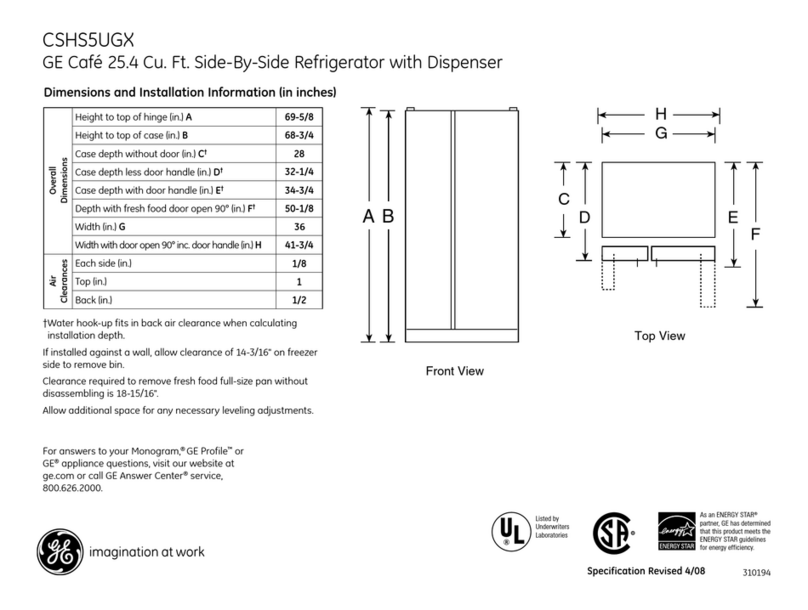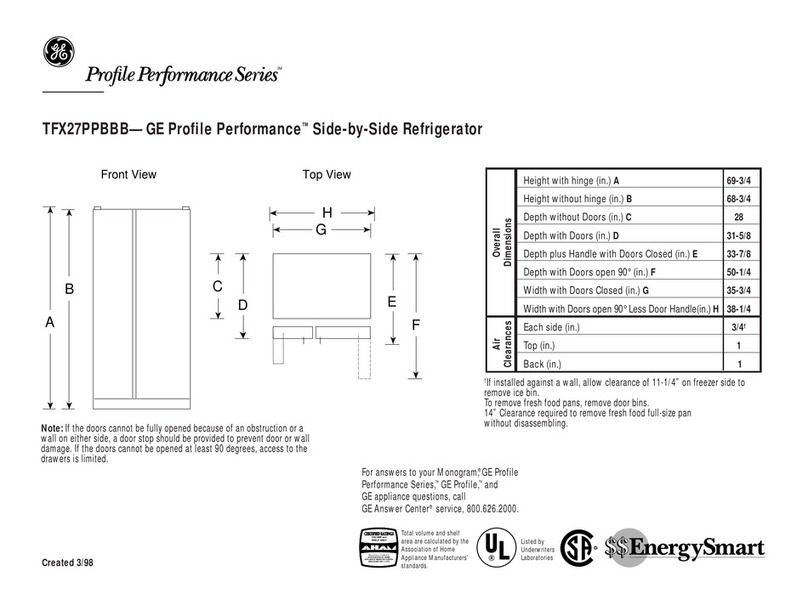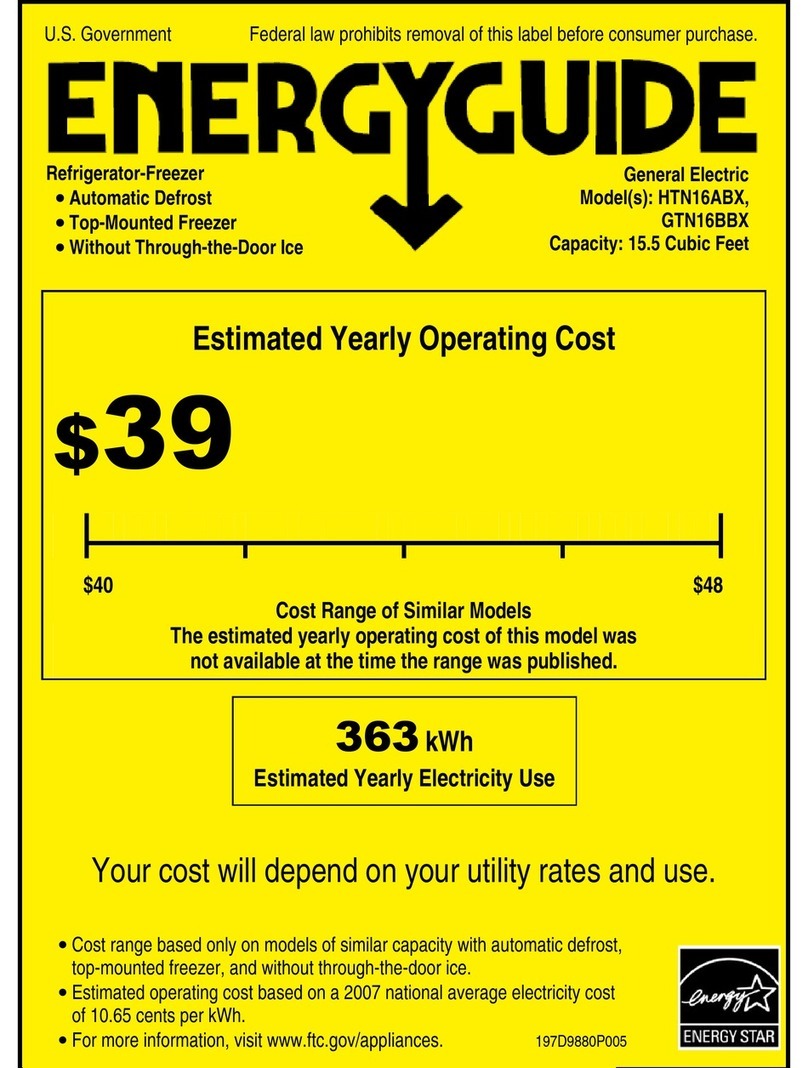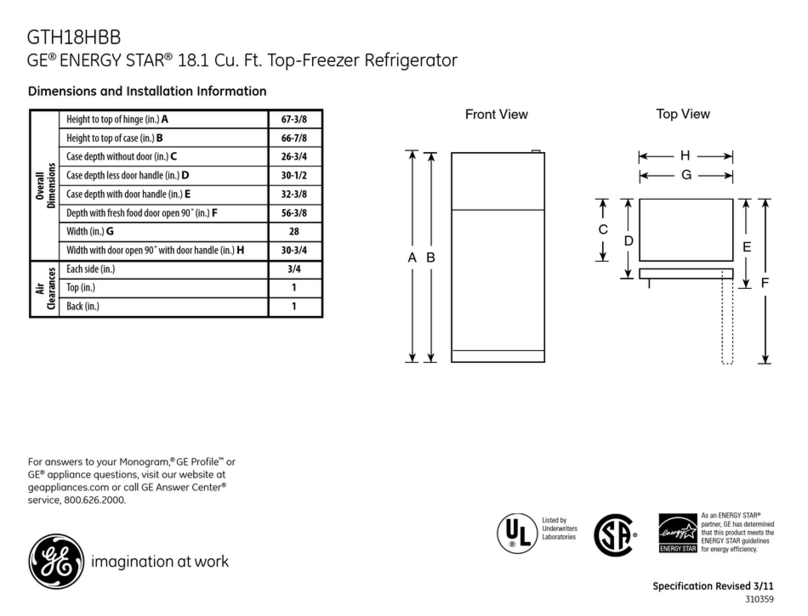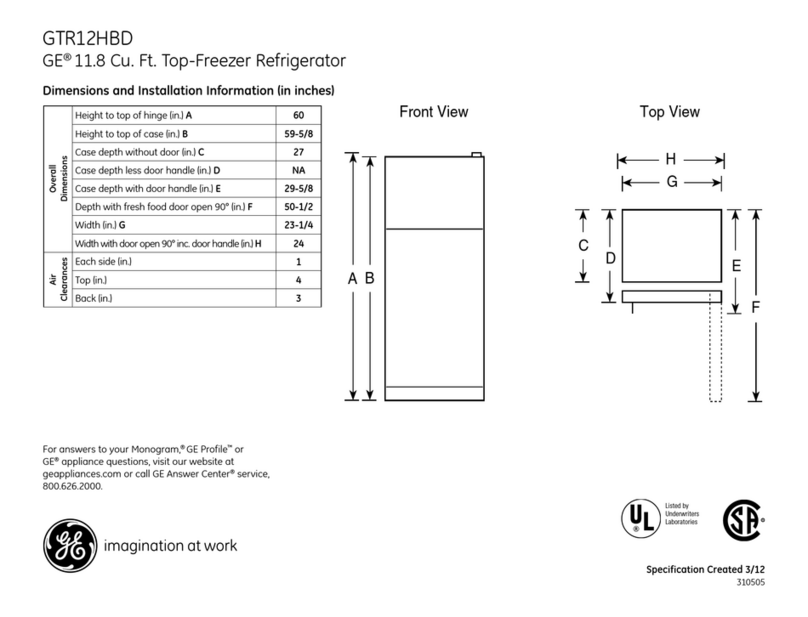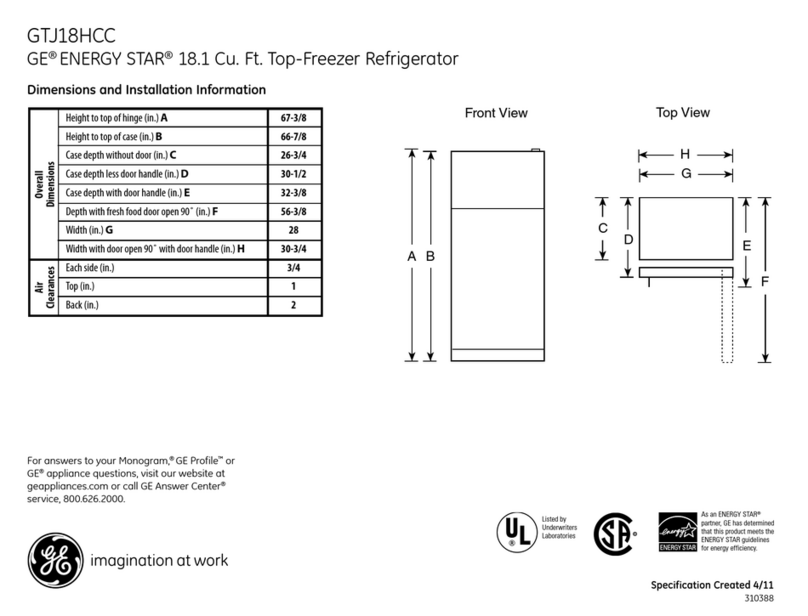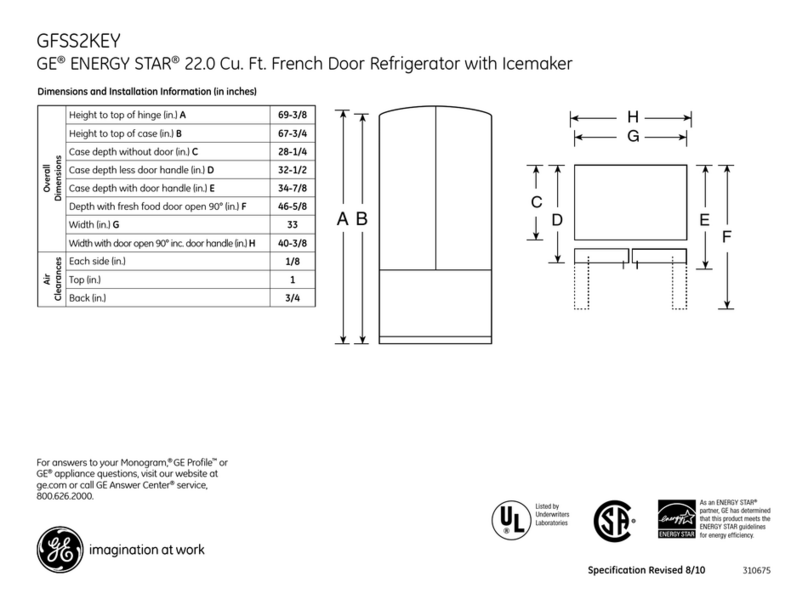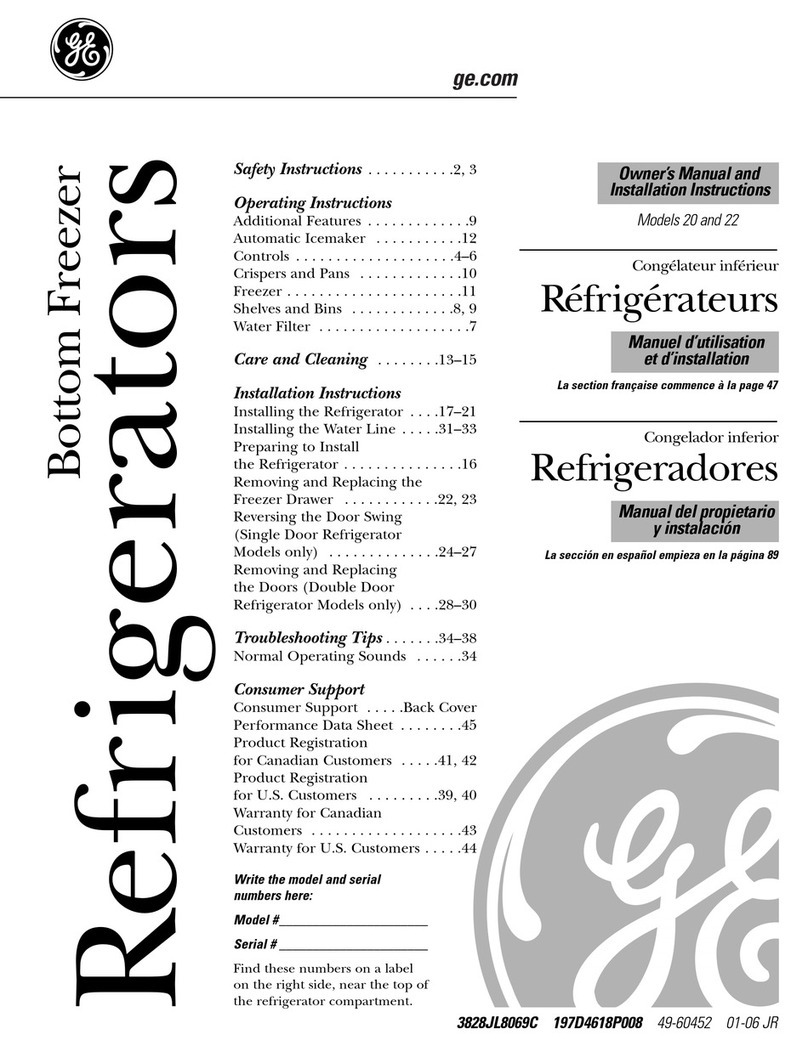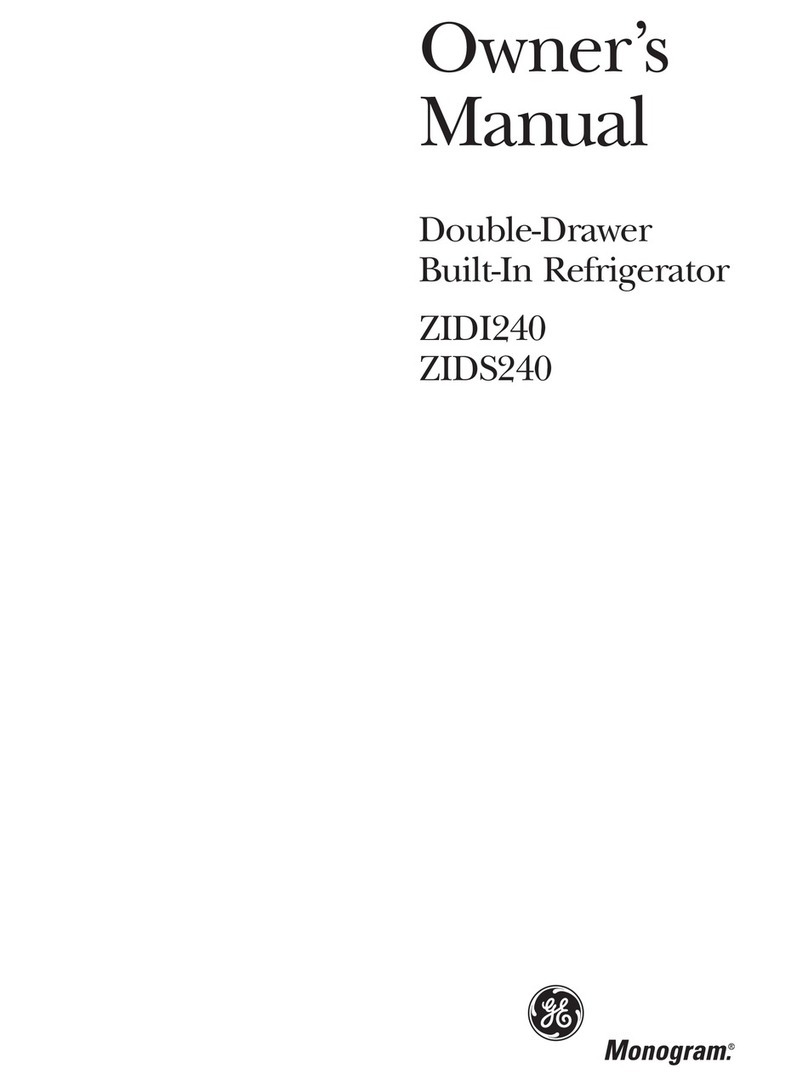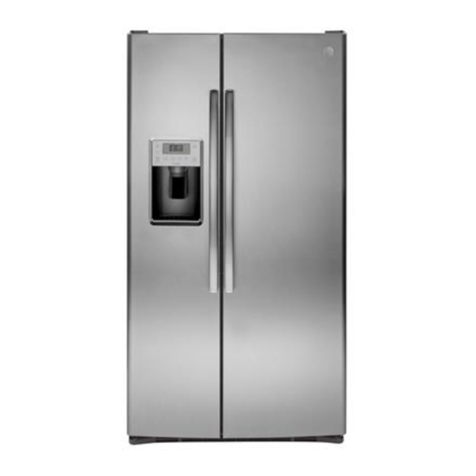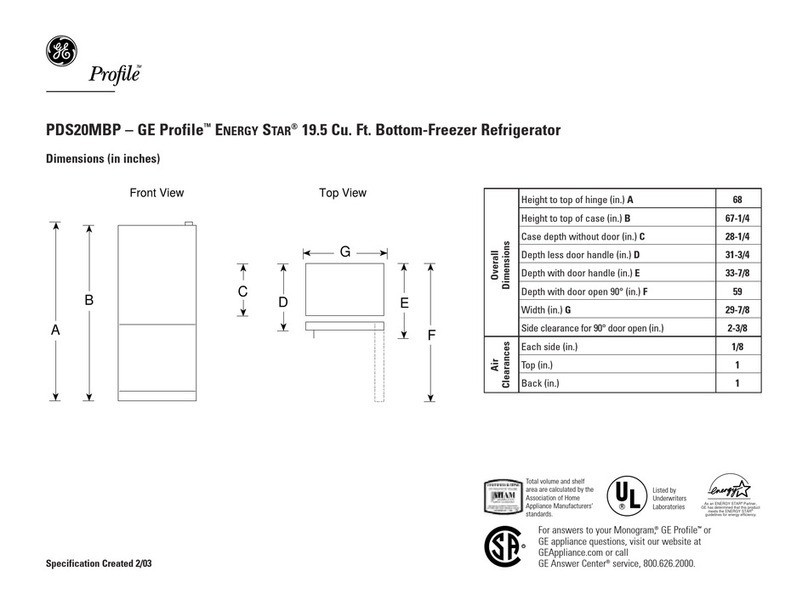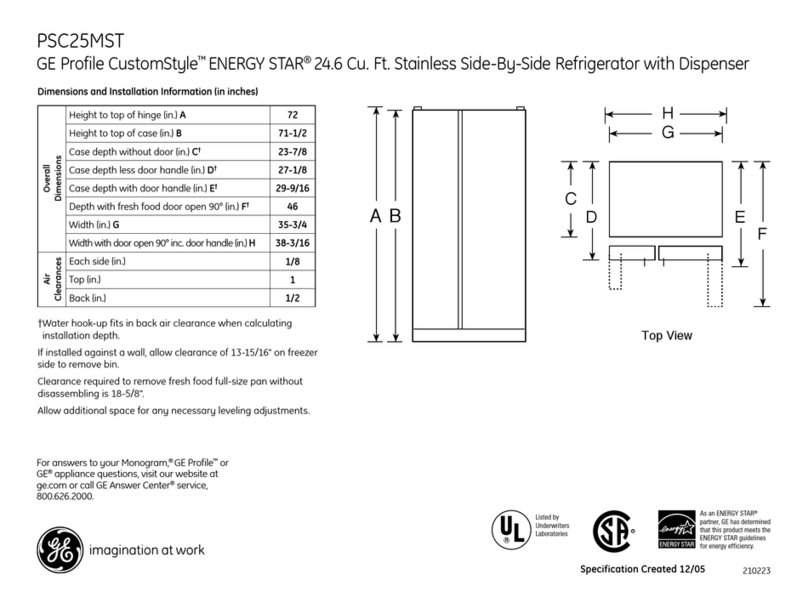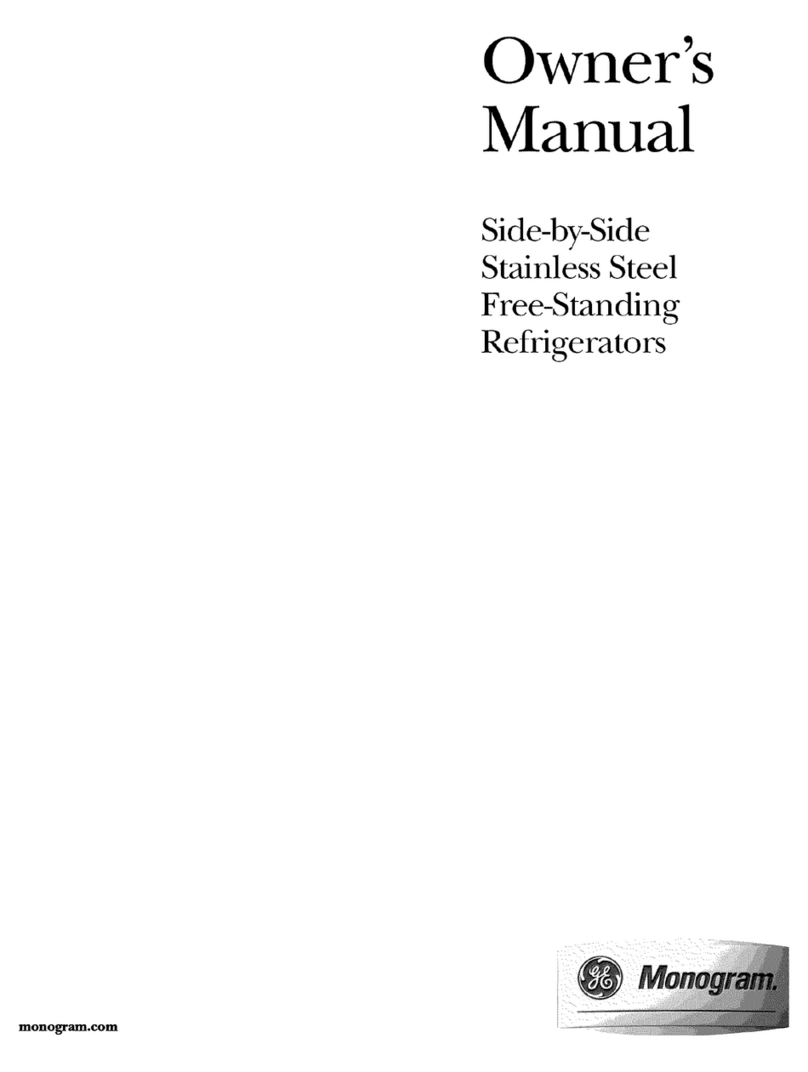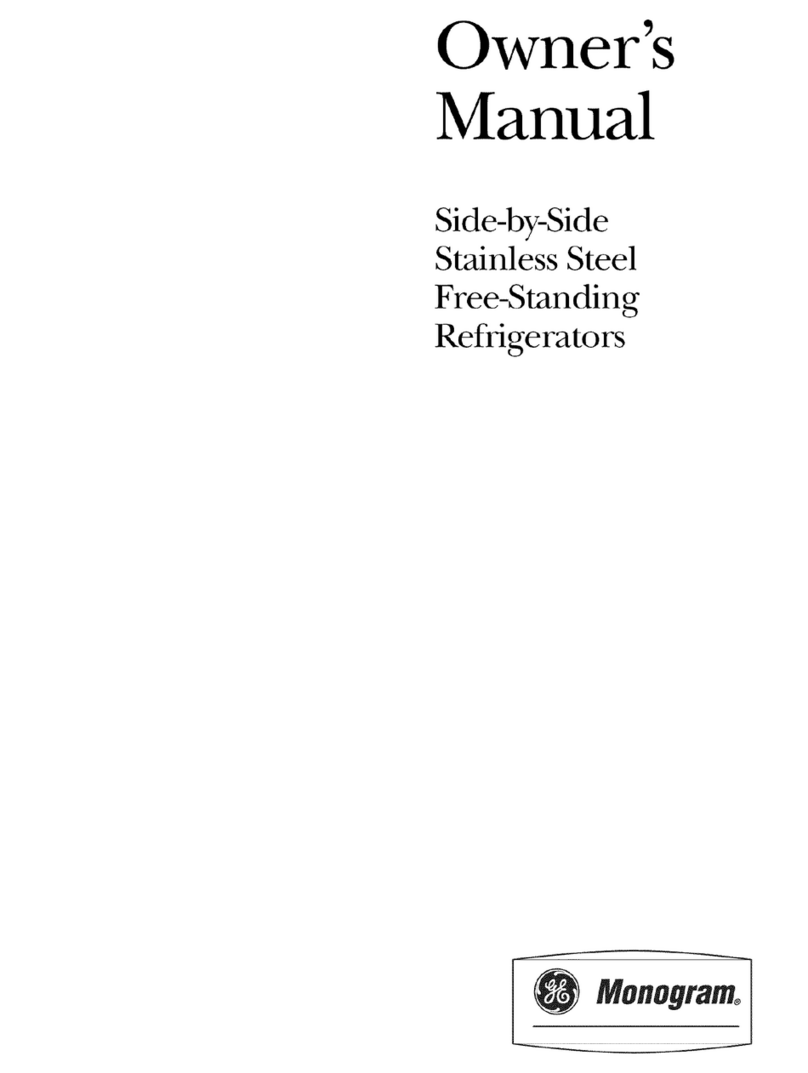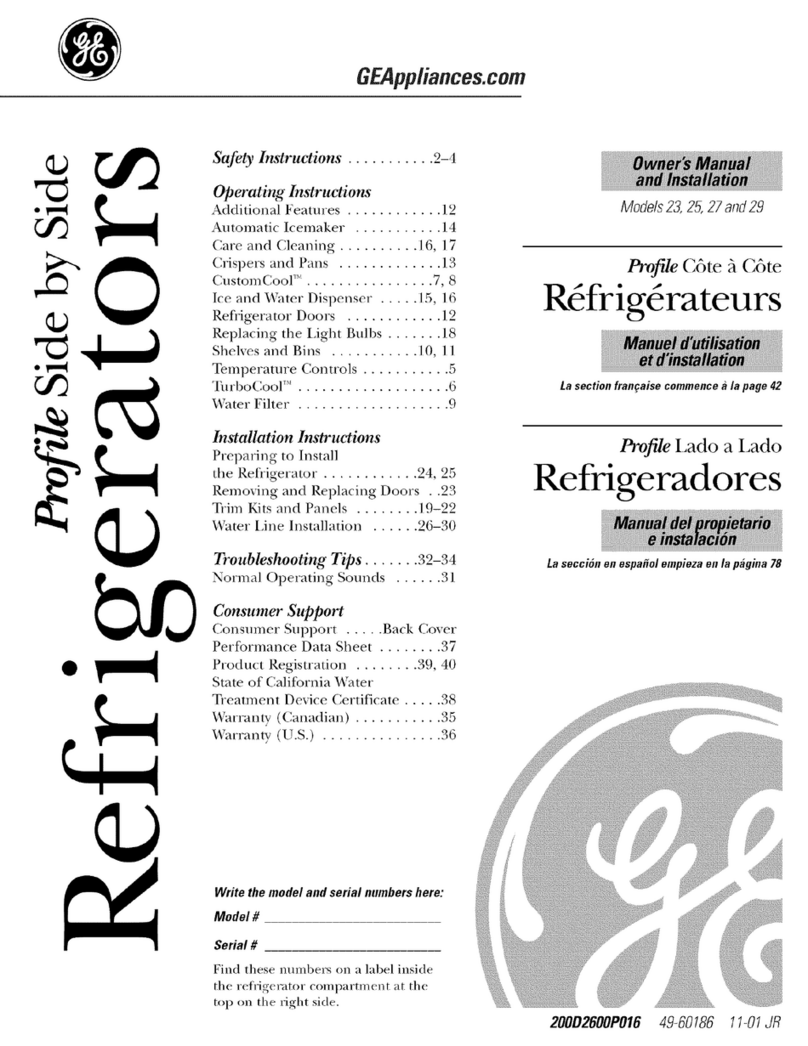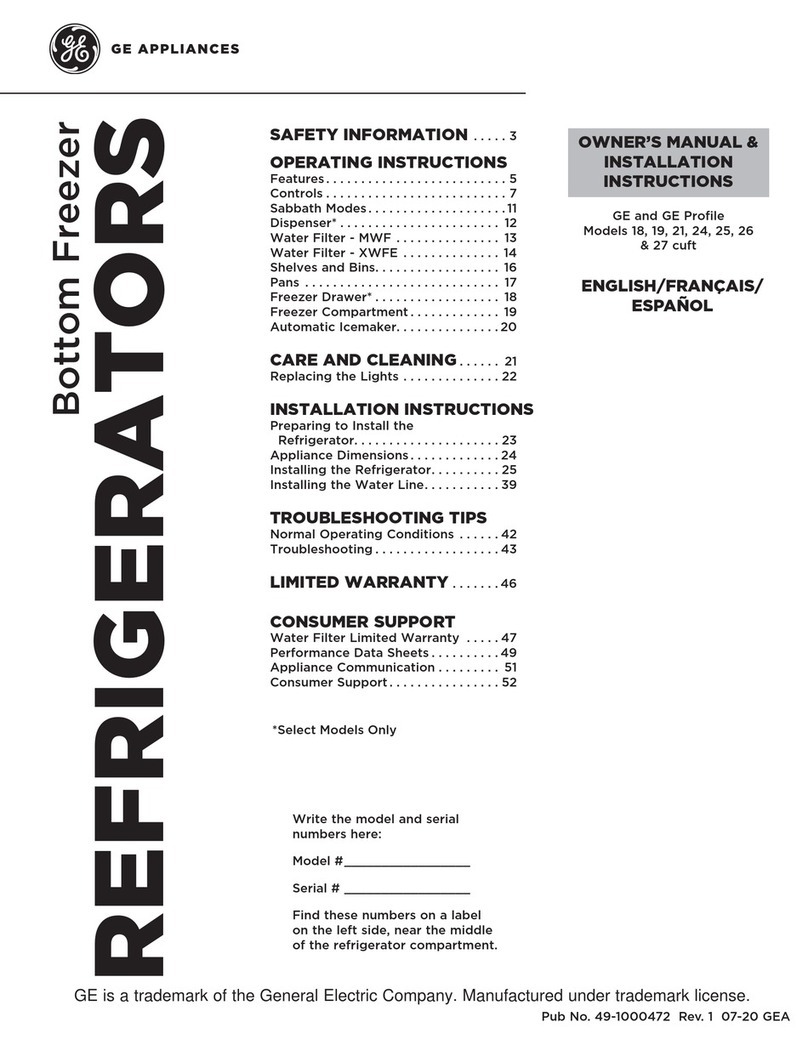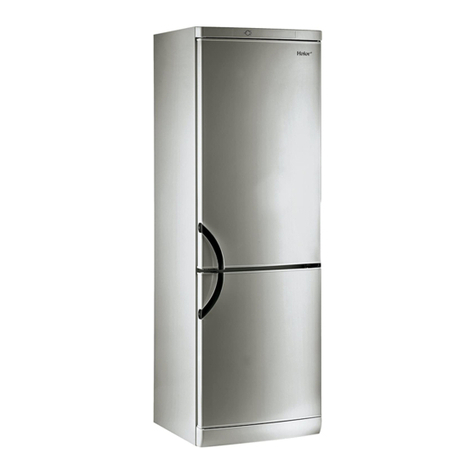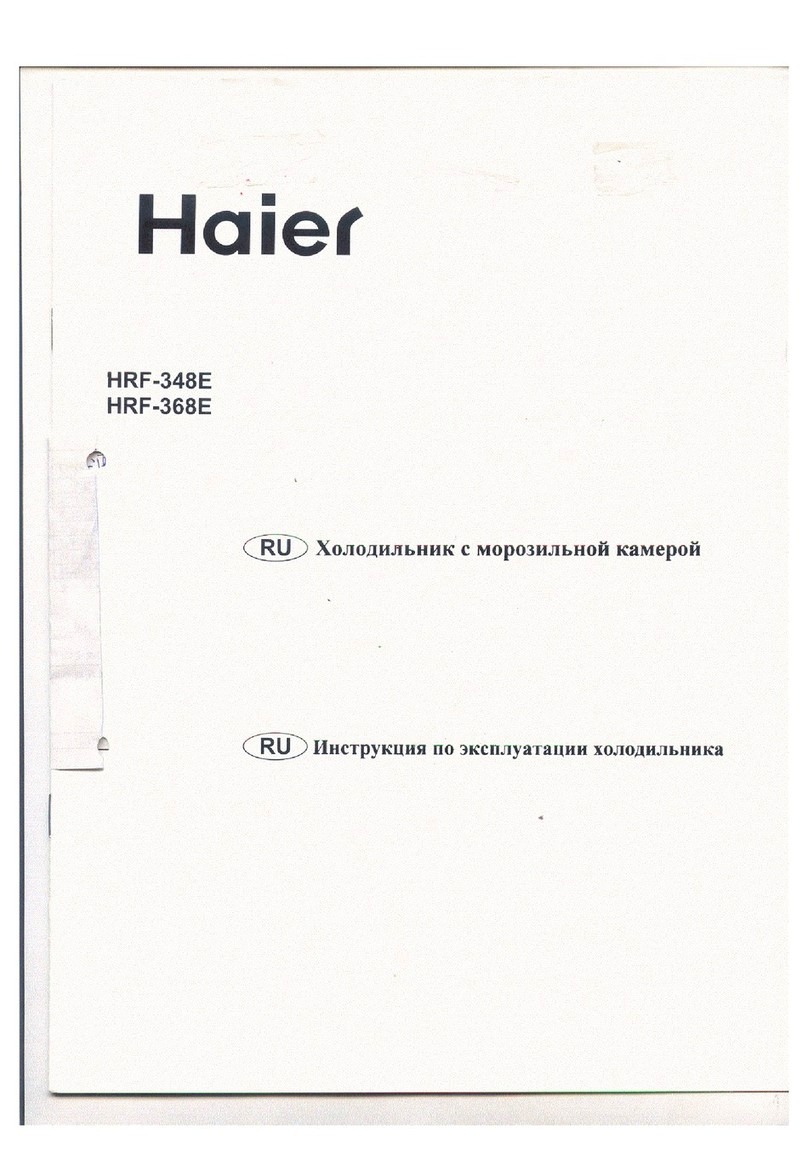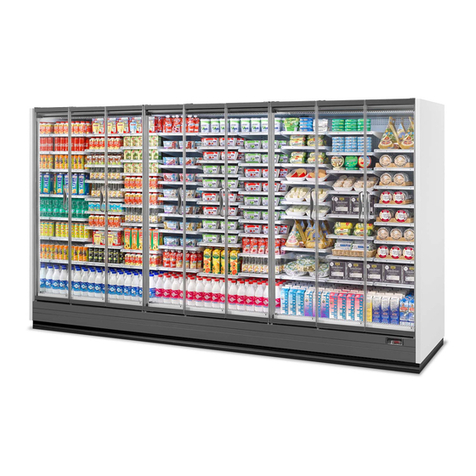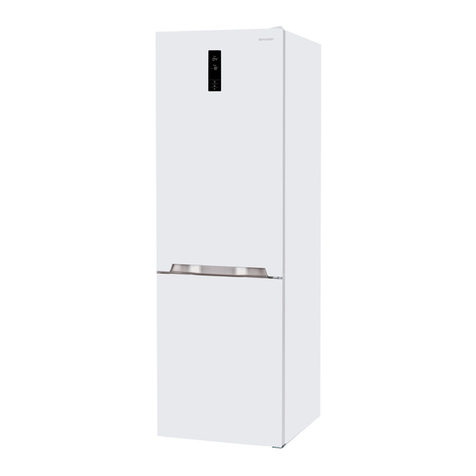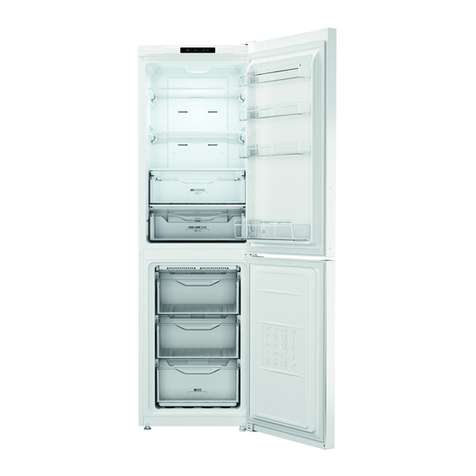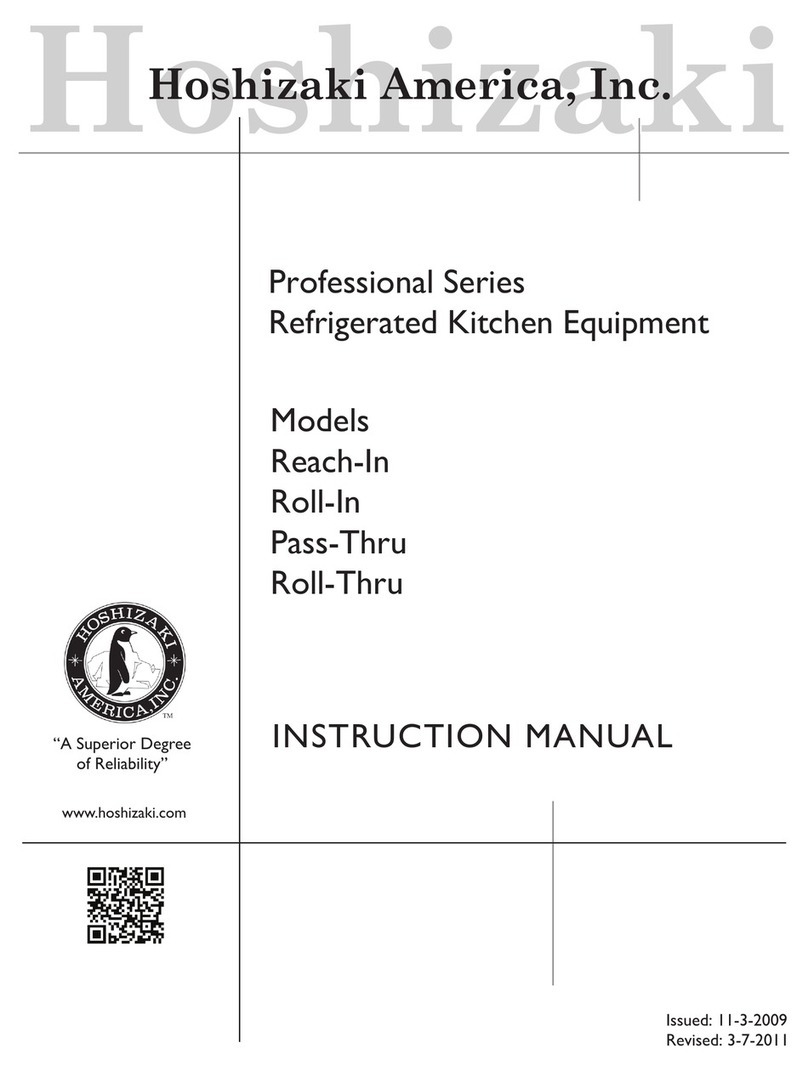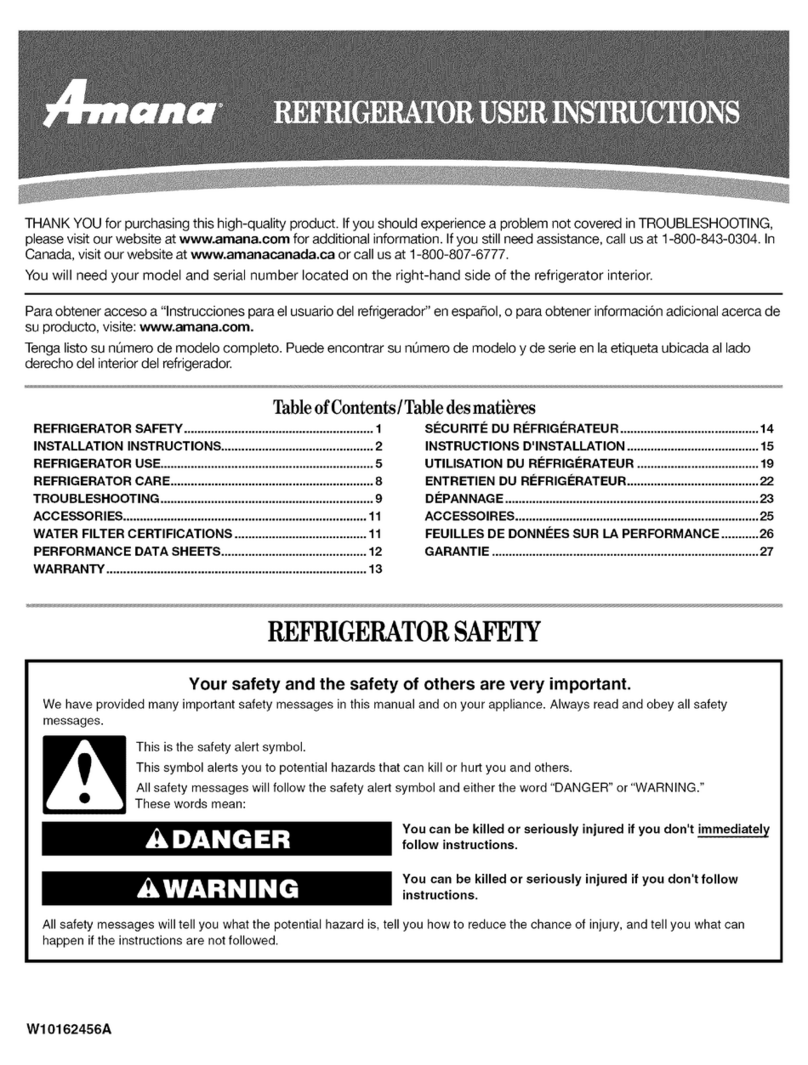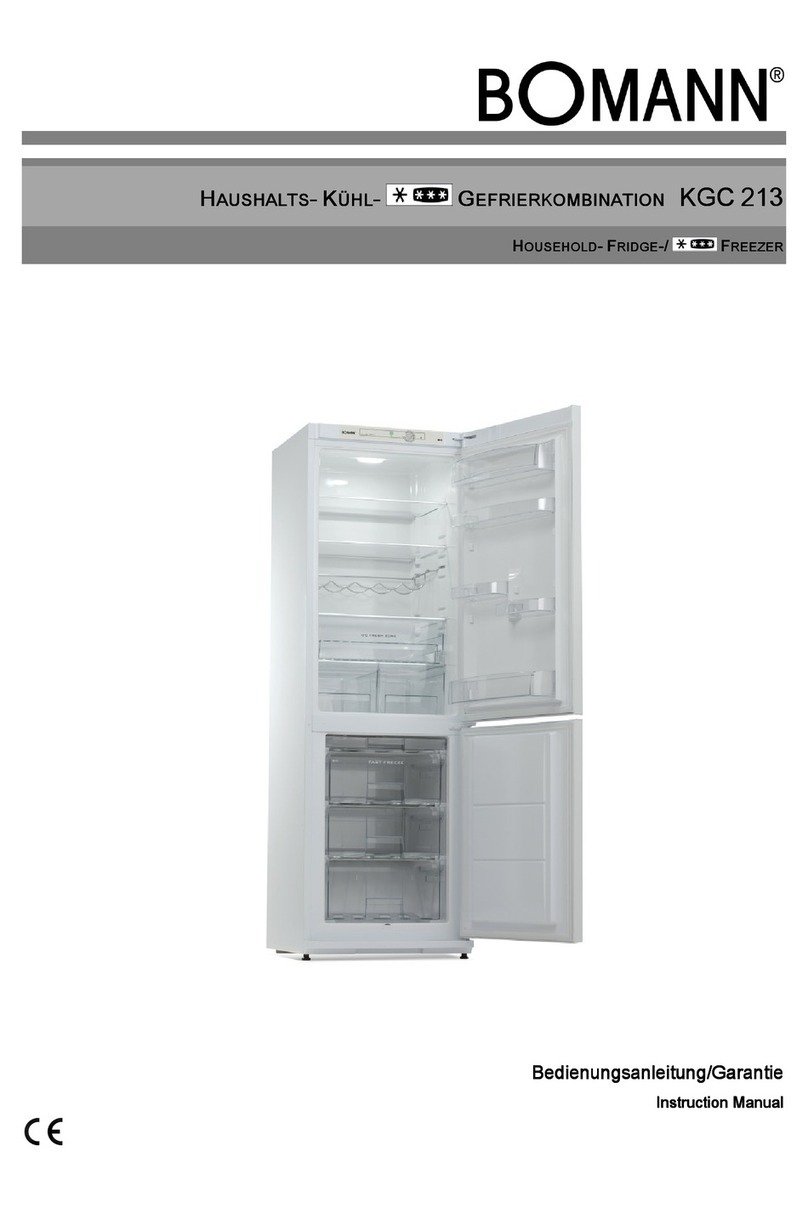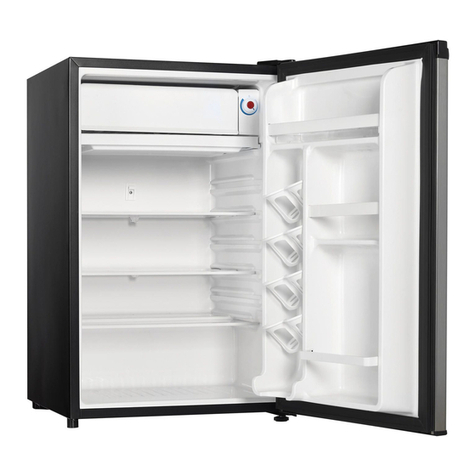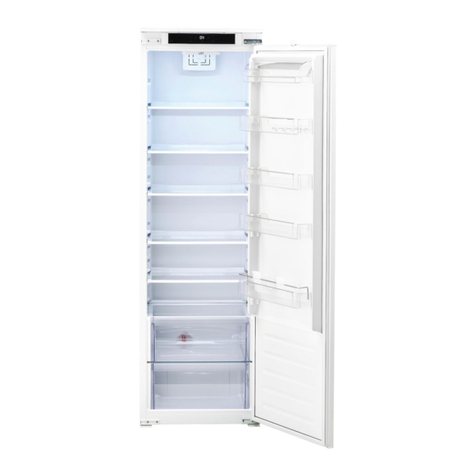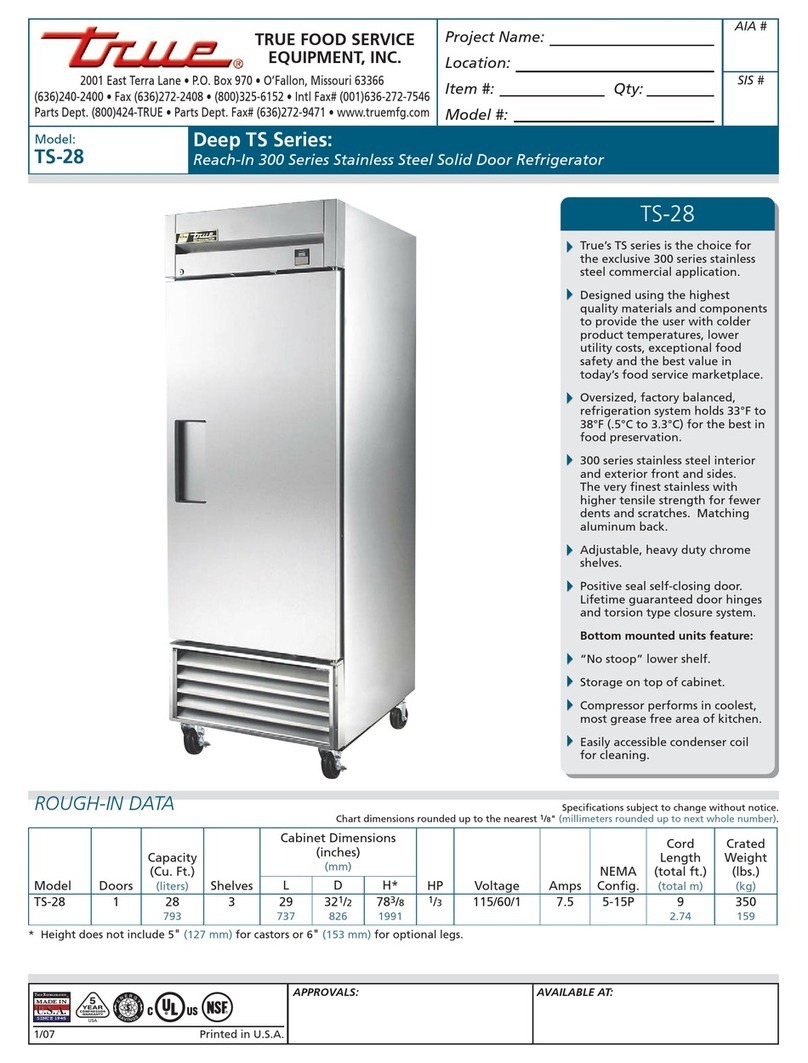LMrOzen Meats,Fishand
Poultry
fvfeats,fish and-poultry purchased
from the store vary in quality and
age;consequently, safe storage
time in yotir refrigerator will vary.
~Always remove store wrappings.
@Rewrap in foil, film or wax paper
and refrigerate immediately.
C4H3se
Cheeseshould be wrapped well
with wax paper or aluminum foil, or
put in aplastic bag.
*Carefully wrap to expel air and
help prevent mold.
~Store pre-packaged cheese in its
own wrapping if you wish.
V’egetabk?s
Vegetable drawers have been
specially designed to preserve
natural moisture and freshness
of produce.
*Crispnesscan be maintained by
covering vegetables with amoist
towel.
~As afutiher aid to freshness,
pre-packaged vegetables can be
stored in their original wrapping.
Ice cream
Fine-quality ice cream, with high
cream content, will normally require
slightly lower temperatures than
more “airy” already-packaged
brands with low cream content.
@It wijl be necessaryto experiment
to determine the location in the
freezer compartment and the tem-
perature control setting to keep
your favorite ice cream atthe right
serving temperature.
~Also, the rear and the floor of the
freezer compartment are slightly
colder than the front and off-the-
floor areas
Tips on frwmzingfoals
There are three essential require-
ments for efficient home freezing,
1. Initialquality.Freezeonly
topquality foods, Freezing retains
quality and fiavor; it cannot improve
quality
2. Speed.The quicker fruits and
vegetables are frozenafterpicking,
the better the frozen product will
be. You’ll savetime, too, because
less culling and sorting will be
necessary.
3. IProperpackaging.Usefood
wraps designed especially for
freezing; they’re readily available
in awide selection at your favorite
store.
Tofreeze meat,fishand
poultry
Wrap well in freezer-weight foil (or
other heavy-dutywrapping material)
forming it carefully to the shape of
the contents. This expels air. Fold
and crimp ends of the packageto
provide agood, lasting seal.
Don’t refreeze meat that hascom-
pletely thawed; meat, whether raw
or cooked, can be frozen success-
fully only once.
Limit freezing of fresh (unfrozen)
meats or seafoods to number of
pounds at atime asfollows:
TB12. . . . . . . . . . . . . . . . 8pounds
TB14. ...............12 pounds
fhlggfim!!xiStcmlgetimes
for mat andFXX.IMY*
Eatingqualitydrops REFIU#ATQR FRE!&
aftertimeshown 35°;~v:O”F. fp~
MONTHS
FreshIVk?als
Roasts(BoefandLamb),,, ,3to5
Roasts(PorhandVeal),, ~. . 3to 5
Steaks(Beef). ,., , ,, . . ~~ 3to 5
Chops (Lamb) .,... ,. ~,, 3to5
Chops(Pork),. ..., ., ... 3to5
Ground and StewMeats,, , , 1to2
Variety Meats . . . . . . ... , 1to 2
Sausage(Pork) .,, , , , ., ., 1to 2
ProcessedMeats
Bacon. ., ., ........... 7
Frankfurters. ........... 7
Ham(tihole). . . . . . . . . t . 7
Ham(Half). ............ 3to 5
Ham(Slices) . . . . . . . . . . . . 3
Luncheon Meats. . . . . . . . . 3to 5
Sausage(Smoked). . . . . . . 7
Sausage
(Dry and Semi-Dry). . . . . 14to 21
CookedMeats
Cooked Meats and
Meat Dishes. ......... 3to 4
Gravy and Meat Broth. . . . . 1to 2
FreshPoultry
Chicken and Turkey
(Whole). ............ 1to 2
Chicken (Pieces). ........ 1to 2
Turkey(Pieces). . .. . . . . . . 1to 2
Duck and Goose(Whole). . . 1to 2
Giblets .......:. ....... 1to 2
CookedPoultry
Pieces
(Covered with Broth). ... 1to 2
Pieces (tlot Covered).. . . . . 3to 4
Cooked Poultry Dishes . . . . . 3to 4
Fried Chicken. .......... 3to 4
(Otherthanformeats&poultry)
6to12
4to8
6to12
6to9
3to4
3to4
3to4
1to2
1
%
1to2
1to2
1to2
Freezing
not
recom-
mended.
2to 3
2to 3
12
9
6
6
3
6
1
4to 6
4
FREEZER
Most fruits and vegetables ... . . . ~. ..8-12 months
Lean fish. . . . . . . . . . . . . . . . . . . . . .6-8 months
Fatty fish, rolls and breads,
soups, stew, casseroles. . . .. ....2-3 months
Cakes, pies, sandwiches,
Ieft-overs (cooked),
Ice cream (original carton). .. ....1 month max.
New techniques are constantly
being developed. Consult the
College or County Extension
Service or your local Utility
Company for the latest information
on freezing and storing foods.
*U.S. Department of Agriculture
Part No. 468 f301P05 Rev. 1

